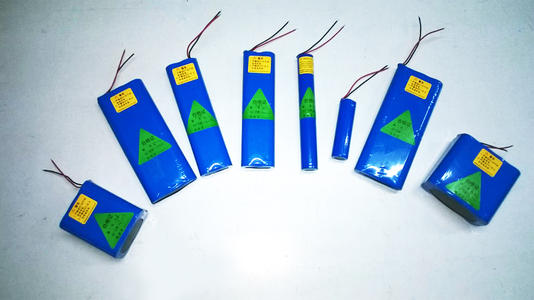Progress in the field of research on anode materials for lithium-ion batteries
The roble had hit a record low after the West imposed sweeping sanctions on Russia for its aggression in Ukraine. Russia's president recently ordered exports of Russian gas to "unfriendly" countries to be settled in robles. The speaker of Russia's upper house of parliament said Moscow was prepared and could shift supplies to markets such as Asia if Europe refused to buy Russian energy.
European countries, which pay mostly in euros, say Russia has no right to reset contracts. The G7 rejected Russia's demand and urged companies not to agree to pay in robles, saying most contracts stipulated payment in euros or dollars. Wholesale gas prices in Europe have risen further recently on concerns about potential supply disruptions.
The Kremlin spokesman said, "According to the March 31 deadline set by Russia's president, we are developing all payment methods to get a simple, understandable, and feasible system for relevant European and international buyers,"
The markets and prices of more commodities like the Lithium-ion batteries would be affected because of the volatile international political situations.
Lithium-ion batteries have become hotspots in energy research due to their higher energy density, long service life, and smaller volume compared with lead-acid, nickel-cadmium, nickel-metal hydride, and other batteries, and no memory effect. One. The negative electrode material is one of the critical components of lithium-ion batteries. It acts as the acceptor of lithium ions and realizes the insertion and extraction of lithium ions during the charging and discharging process. Therefore, the quality of the negative electrode material directly affects the overall performance of the lithium-ion battery. Graphite and modified graphite are widely used as anode materials for commercial lithium-ion batteries. Still, their theoretical capacity is only 372mAh/g, which significantly restricts the development of high-energy power batteries. Group IV element (silicon, germanium, tin)-based anode materials have become a research hotspot for next-generation lithium-ion batteries due to their high theoretical capacities (3579mAh/g, 1600mAh/g, 994mAh/g, respectively). However, silicon, germanium, and tin-based anode materials have the problem of significant volume expansion during the charging and discharging process. Long-term charging and discharging will cause the pulverization of particles and the shedding of active materials, thus affecting the cycle stability of lithium-ion batteries.

In recent years, the advanced lithium-ion battery team led by Han Weiqiang, a researcher at the Institute of New Energy Technology affiliated with the Ningbo Institute of Materials Technology and Engineering, Chinese Academy of Sciences, has made a series of progress in high-capacity silicon, germanium, and tin-based anode materials. In terms of high-performance silicon-based anode materials, researchers have developed a low-cost, high-capacity, and high-stability porous silicon-based anode material technology. By carbon coating, the porous silicon, the performance of the silicon-based negative electrode material for lithium-ion batteries is further improved. The capacity retention rate of the silicon-carbon composite electrode material was 86.8% after 300 charge-discharge cycles. Related research has applied for Chinese invention patents (201410150747.5, 201410276413.2), and the research results were published in NanoEnergy (2015, 11, 490-499) in the form of Communication.
Based on the previous work, the team synthesized and prepared a series of new phase MSn5 (M=Fe, Co, Fe0.5Co0.5) alloy nano-anode materials using the wet chemical method of improving polyols. The synthesized FeSn5 alloy nanoparticles have a theoretical capacity of 929mAhg-1 when used as a negative electrode material for lithium-ion batteries, which is the material with the highest theoretical specific capacity among the reported M-Sn (M is an electrochemically inert metal) alloy. The researchers prepared a series of Fe0.5Co0.5Sn5 new phase alloy nanoparticles with a 30-50nm particle size range, which further expanded the Co-Fe-Sn phase diagram. Related achievements have applied for invention patents (2013104705134, 201310706760X, 2103715406A). At the same time, the charge-discharge mechanism was deeply discussed and explained by in-situ XAFS, in-situ XRD, and electrochemical test methods. The research on the electrochemical mechanism of this series of tin-based new phase alloy anode materials provides effective theoretical guidance for the team's subsequent development of high-performance tin-based anode materials. Relevant results were published in JournalofMaterialsChemistryA (2015, 3(13):7170-7178) and ACS Appl.Mater.Interfaces (2015,7,7912-7919).
The team has also made progress in the research and development of long-life titanium-based anode materials, applying for an invention patent (201310685139. X), and the relevant results were published in the Journal of Materials Chemistry (2014(2), 10599-10606).
High-quality lithium-ion batteries supplier
Luoyang Moon & Star New Energy Technology Co., LTD, founded on October 17, 2008, is a high-tech enterprise committed to developing, producing, processing, selling, and technical services of lithium-ion battery anode materials. After more than 10 years of development, the company has gradually developed into a diversified product structure with natural graphite, artificial graphite, composite graphite, intermediate phase, and other negative materials (silicon-carbon materials, etc.). The products are widely used in high-end lithium-ion digital power and energy storage batteries. If you are looking for Lithium battery anode material, click on the needed products and send us an inquiry:sales@graphite-corp.com.
Overall, the demand for Lithium-ion batteries is on the rise, and future Lithium-ion batteries will continue to evolve. Although the prosperity of the brand name has rebounded, there are still many outstanding problems in Lithium-ion batteries, and the Lithium-ion batteries will develop steadily,if you need Lithium-ion batteries please contact us.
Inquiry us
PREVIOUS NEWS